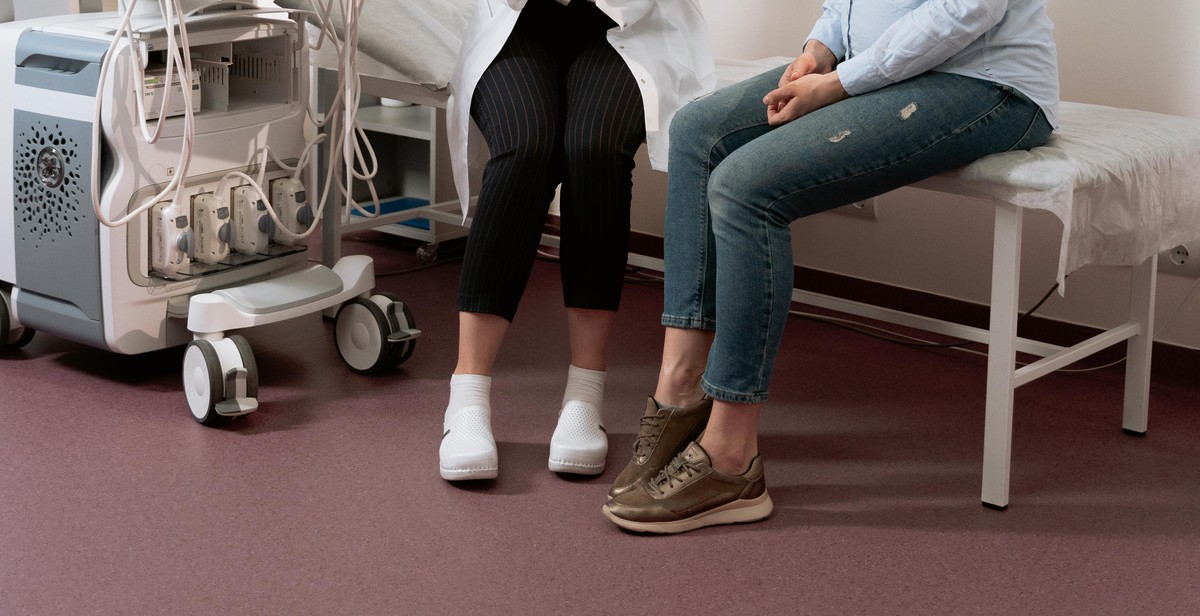How to Improve Hospital Efficiency: Streamlining Processes for Better Patient Care
Hospitals are complex organizations that require efficient processes and procedures to ensure high-quality patient care. However, healthcare providers often face challenges in managing resources, reducing costs, and improving patient outcomes. To address these challenges, hospitals must focus on streamlining their processes and workflows.
The Benefits of Streamlining Processes
Streamlining processes can help hospitals in several ways:
- Improved patient outcomes
- Reduced costs
- Increased efficiency
- Enhanced staff satisfaction
By optimizing processes, hospitals can reduce waste, eliminate redundancies, and focus on delivering high-quality care to patients. This can also help hospitals to better manage their resources and reduce costs, which is critical in today’s healthcare environment.
Key Strategies for Streamlining Hospital Processes
There are several strategies that hospitals can use to streamline their processes:
- Standardize processes and procedures
- Implement technology solutions
- Use data analytics to identify areas for improvement
- Engage staff and encourage collaboration
By implementing these strategies, hospitals can improve their efficiency and effectiveness, which can ultimately lead to better patient care and outcomes.

Understanding Hospital Efficiency
Efficiency is a critical aspect of healthcare delivery in hospitals. It refers to the ability of healthcare providers to deliver high-quality care in a timely and cost-effective manner. Hospital efficiency is a complex concept that involves the optimization of various processes, including patient flow, staffing, resource allocation, and technology utilization.
Defining Hospital Efficiency
Hospital efficiency can be defined as the ability of healthcare providers to deliver the right care to the right patient at the right time and cost. This means that hospitals must strive to achieve the best possible outcomes for patients while minimizing waste, reducing costs, and improving patient satisfaction.
Efficiency in hospitals is closely linked to patient safety and quality of care. When hospitals are efficient, they can provide better care to patients, reduce wait times, and minimize the risk of medical errors. Efficient hospitals also have higher patient satisfaction rates, which can lead to improved patient loyalty and increased revenue.
Factors Affecting Hospital Efficiency
Several factors can affect hospital efficiency. These include:
- Staffing: The number and skill mix of healthcare staff can have a significant impact on hospital efficiency. Adequate staffing levels are essential for ensuring that patients receive timely and appropriate care.
- Technology: The use of technology, such as electronic health records (EHRs) and telemedicine, can improve hospital efficiency by streamlining processes and reducing paperwork.
- Resource allocation: Efficient hospitals allocate resources, such as equipment and supplies, in a way that maximizes their use and minimizes waste.
- Patient flow: Efficient hospitals manage patient flow by ensuring that patients are seen in a timely manner and that there are no bottlenecks in the care delivery process.
Other factors that can affect hospital efficiency include the complexity of medical conditions, the availability of resources, and the regulatory environment.
| Factor | Impact on Hospital Efficiency |
|---|---|
| Staffing | Adequate staffing levels are essential for ensuring that patients receive timely and appropriate care. |
| Technology | The use of technology, such as electronic health records (EHRs) and telemedicine, can improve hospital efficiency by streamlining processes and reducing paperwork. |
| Resource allocation | Efficient hospitals allocate resources, such as equipment and supplies, in a way that maximizes their use and minimizes waste. |
| Patient flow | Efficient hospitals manage patient flow by ensuring that patients are seen in a timely manner and that there are no bottlenecks in the care delivery process. |
In conclusion, hospital efficiency is critical for delivering high-quality care and improving patient outcomes. Hospitals must strive to optimize their processes, allocate resources effectively, and leverage technology to improve efficiency and reduce costs.

Challenges to Hospital Efficiency
Efficiency is a crucial factor in any healthcare facility, as it directly affects patient care and outcomes. However, hospitals face several challenges that hinder their ability to operate efficiently. These challenges include:
Bureaucracy and Red Tape
Hospitals are often bogged down by bureaucracy and red tape. This can be due to government regulations, insurance policies, and other administrative procedures. These bureaucratic processes can slow down decision-making and hinder the ability of healthcare providers to provide timely care to patients. Additionally, these processes often require a significant amount of paperwork, which can be time-consuming and prone to errors.
Inefficient Processes and Workflow
Inefficient processes and workflow can also hinder hospital efficiency. This can include outdated technology, manual processes, and lack of automation. For example, if a hospital is still using paper-based records, it can take longer to retrieve patient information, which can delay treatment. Additionally, if processes are not streamlined, it can lead to bottlenecks and delays in patient care.
Lack of Communication and Collaboration
Effective communication and collaboration are essential in any healthcare facility. However, hospitals often struggle with communication due to a lack of standardized processes and tools. This can lead to miscommunication between healthcare providers, delays in treatment, and even medical errors. Additionally, a lack of collaboration between departments can lead to redundancy and inefficiency.
Overall, these challenges can significantly impact hospital efficiency and patient care. Addressing these challenges requires a concerted effort from all stakeholders, including hospital administrators, healthcare providers, and technology vendors. By streamlining processes and improving communication, hospitals can improve efficiency, reduce costs, and ultimately provide better patient care.

Streamlining Hospital Processes
Streamlining hospital processes is an essential step towards improving hospital efficiency. By optimizing workflows, hospitals can reduce waste, improve patient care, and enhance staff productivity. Here are three ways to streamline hospital processes:
Implementing Lean Methodology
Lean methodology is a management approach that focuses on eliminating waste and improving process efficiency. It entails identifying and eliminating non-value-adding activities in hospital processes. By implementing lean methodology, hospitals can improve patient flow, reduce wait times, and minimize errors.
Hospitals can use various lean tools such as value stream mapping, 5S, and Kaizen events to streamline their processes. Value stream mapping helps to identify value-adding and non-value-adding activities in a process. 5S is a workplace organization method that helps to reduce clutter and improve efficiency. Kaizen events involve continuous improvement initiatives that help to identify and eliminate waste in a process.
Optimizing Staffing and Resource Allocation
Optimizing staffing and resource allocation is crucial in streamlining hospital processes. Hospitals should ensure that they have the right number of staff with the required skills to handle patient care effectively. Overstaffing can lead to increased costs, while understaffing can compromise patient care.
Resource allocation involves ensuring that resources such as equipment and supplies are available when needed. Hospitals can use technology such as predictive analytics to forecast demand for resources and optimize their allocation. By optimizing staffing and resource allocation, hospitals can improve patient care, reduce costs, and enhance staff productivity.
Automating Administrative Tasks
Administrative tasks such as appointment scheduling, patient registration, and billing can be time-consuming and prone to errors. By automating these tasks, hospitals can free up staff time, reduce errors, and improve patient satisfaction.
Hospitals can use various technologies such as electronic health records (EHRs), patient portals, and automated billing systems to automate administrative tasks. EHRs help to centralize patient information and enable easy access by authorized personnel. Patient portals allow patients to schedule appointments, view test results, and communicate with healthcare providers. Automated billing systems help to reduce errors and improve revenue cycle management.
In conclusion, streamlining hospital processes is crucial in improving hospital efficiency. By implementing lean methodology, optimizing staffing and resource allocation, and automating administrative tasks, hospitals can reduce waste, improve patient care, and enhance staff productivity.

Improving Patient Care Through Efficiency
Efficiency in hospitals can have a significant impact on patient care. By streamlining processes and reducing wait times and length of stay, hospitals can improve patient satisfaction and safety. Here are some ways hospitals can improve patient care through efficiency:
Reducing Wait Times and Length of Stay
Long wait times and extended hospital stays can be frustrating for patients and their families. Hospitals can reduce wait times and length of stay by implementing efficient processes such as:
- Using electronic medical records (EMRs) to streamline patient information and reduce paperwork
- Implementing a patient flow system to manage patient movement throughout the hospital
- Using predictive analytics to optimize bed allocation and reduce wait times
- Providing patients with real-time information about their wait times and treatment schedules
Increasing Patient Satisfaction
Efficient processes can also improve patient satisfaction. Patients appreciate hospitals that value their time and prioritize their care. Here are some ways hospitals can increase patient satisfaction:
- Providing patients with clear and concise information about their treatment plans and expected outcomes
- Providing patients with amenities such as Wi-Fi, TV, and comfortable accommodations
- Reducing noise levels and improving the overall hospital environment
- Offering patients access to alternative therapies such as music and art therapy
Improving Patient Safety
Efficient processes can also improve patient safety by reducing errors and improving communication. Here are some ways hospitals can improve patient safety:
- Using barcode scanners to ensure accurate medication administration
- Implementing a system for reporting and analyzing errors to prevent future occurrences
- Ensuring that all staff members are trained to communicate effectively and efficiently
- Using technology such as telemedicine to monitor patients remotely and reduce the risk of infection
| Efficiency | Patient Care Benefits |
|---|---|
| Reducing Wait Times and Length of Stay | Improved patient satisfaction and safety |
| Increasing Patient Satisfaction | Improved patient experience and outcomes |
| Improving Patient Safety | Reduced errors and improved communication |

Conclusion
Improving hospital efficiency is crucial for providing better patient care and reducing costs. Streamlining processes can help hospitals save time, money, and resources while optimizing patient outcomes. The key to improving hospital efficiency is to identify areas that need improvement and implement strategies that can help achieve the desired results.
Key Takeaways:
- Efficient hospitals deliver better patient care and reduce costs
- Streamlining processes can help hospitals save time, money, and resources while optimizing patient outcomes
- Identifying areas that need improvement is the first step towards improving hospital efficiency
- Implementing strategies such as automation, standardization, and technology can help hospitals achieve their goals
Recommendations:
Based on the above insights, we recommend that hospitals take the following steps to improve their efficiency:
- Conduct a thorough analysis of current processes to identify areas that need improvement
- Implement automation and standardization to streamline workflows and reduce errors
- Invest in technology such as electronic health records and patient portals to improve communication and access to information
- Provide staff training and education to ensure that they are equipped to use new processes and technologies effectively
- Regularly monitor and evaluate performance to identify areas for further improvement
| Benefits of Improving Hospital Efficiency | Challenges of Improving Hospital Efficiency |
|---|---|
| Improved patient outcomes | Resistance to change from staff and stakeholders |
| Reduced costs | Need for investment in technology and training |
| Increased staff satisfaction | Time-consuming and complex process |
Improving hospital efficiency is a continuous process that requires commitment, resources, and a willingness to embrace change. By implementing the recommendations outlined above, hospitals can achieve their goals of providing better patient care, reducing costs, and improving staff satisfaction.
